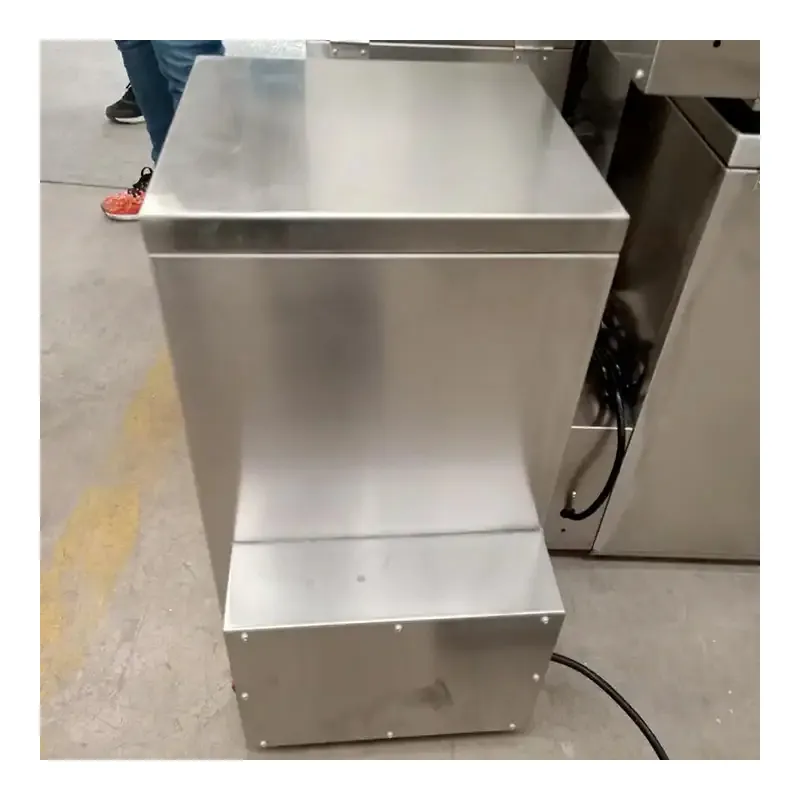Floating Feed Production Equipment for Aquatic Livestock and Fish Farming
des . 29, 2024 19:39 Back to list
Floating Feed Production Equipment for Aquatic Livestock and Fish Farming
The Floating Feed Making Machine Revolutionizing Aquaculture
In recent years, the aquaculture industry has witnessed remarkable growth, largely driven by the increasing demand for fish and seafood. As the world seeks sustainable sources of protein, the need for efficient and high-quality fish feed has never been greater. This has led to the innovation and adoption of specialized equipment, particularly the floating feed making machine. This article explores the significance, functionality, and advantages of these machines in the realm of aquaculture.
Understanding Floating Feed
Floating feed is specifically designed for fish farming operations. Unlike traditional sinking feeds, floating feeds remain on the water's surface for an extended time, allowing fish to feed at their preferred level. This type of feed not only prevents wastage but also encourages more efficient feeding practices among fish. Floating feed can include pellets, which are rich in essential nutrients necessary for healthy growth and development.
The Functionality of Floating Feed Making Machines
Floating feed making machines serve a critical purpose in the production of fish feed. These machines utilize advanced technology to process raw materials, including fish meal, grains, and additives, into uniform pellets. The primary components of a floating feed machine include
1. Mixer This initial component blends raw ingredients thoroughly to ensure a homogenous mixture, which is vital for consistent nutrient distribution.
2. Extruder One of the most critical elements of the machine, the extruder applies heat and pressure to the feed mixture. This process gelatinizes the starches, resulting in a chewy and buoyant pellet that will float on water. The extrusion process also helps to eliminate harmful pathogens, increasing the feed's safety for fish consumption.
3. Pellet Cutter Once the mixture is extruded, it needs to be cut into specific sizes. The pellet cutter adjusts the size and shape of the pellets, catering to various fish species with differing dietary requirements.
4. Dryer After cutting, the pellets are typically moist and need to be dried to improve their shelf life. The drying process also ensures that the pellets hold their shape and remain buoyant in water.
floating feed making machine

5. Packaging Finally, the finished feed is packaged for distribution. Effective packaging solutions ensure that the feed remains fresh and retains its nutritional quality.
Advantages of Floating Feed Making Machines
The introduction of floating feed making machines has transformed aquaculture for several reasons
1. Nutritional Quality These machines produce high-quality feed that meets the nutritional demands of various fish species. This leads to improved growth rates and feed conversion ratios.
2. Reduced Feed Wastage Since floating feed stays on the surface longer, it significantly reduces feed wastage compared to sinking varieties. This efficiency not only conserves resources but also minimizes water pollution from uneaten feed.
3. Customizability Modern floating feed machines can be tailored to produce feed for specific fish species or life stages. This versatility allows fish farmers to optimize their production processes.
4. Cost-Effectiveness By producing their feed, fish farmers can reduce operational costs, lower dependence on commercial feed suppliers, and potentially improve their profit margins.
5. Sustainability Floating feed machines contribute to sustainable aquaculture practices by allowing for the inclusion of alternative protein sources, which can reduce reliance on fishmeal derived from wild fisheries.
Conclusion
The floating feed making machine is a game-changer in the aquaculture industry, promoting efficient, sustainable, and high-quality fish farming practices. By integrating advanced technology and improving feed production processes, these machines play a vital role in meeting the global demand for fish while protecting marine ecosystems. As the industry continues to evolve, the floating feed making machine will undoubtedly remain at the forefront of aquaculture innovations, providing solutions that benefit farmers, fish, and consumers alike.
-
Automatic Feeding Line System - Anping Yize | Efficiency&Durability
NewsJul.29,2025
-
Automatic Feeding Line System - Anping Yize|Poultry Efficiency&Durability
NewsJul.29,2025
-
Automatic Feeding Line System-Anping County Yize Metal Products Co., Ltd.|Durable PP Material&Easy Maintenance
NewsJul.29,2025
-
Automatic Feeding Line System-Pan Feeder Nipple Drinker|Anping County Yize Metal Products Co., Ltd.
NewsJul.29,2025
-
Hot Sale 24 & 18 Door Rabbit Cages - Premium Breeding Solutions
NewsJul.25,2025
-
Automatic Feeding Line System Pan Feeder Nipple Drinker - Anping County Yize Metal Products Co., Ltd.
NewsJul.21,2025






